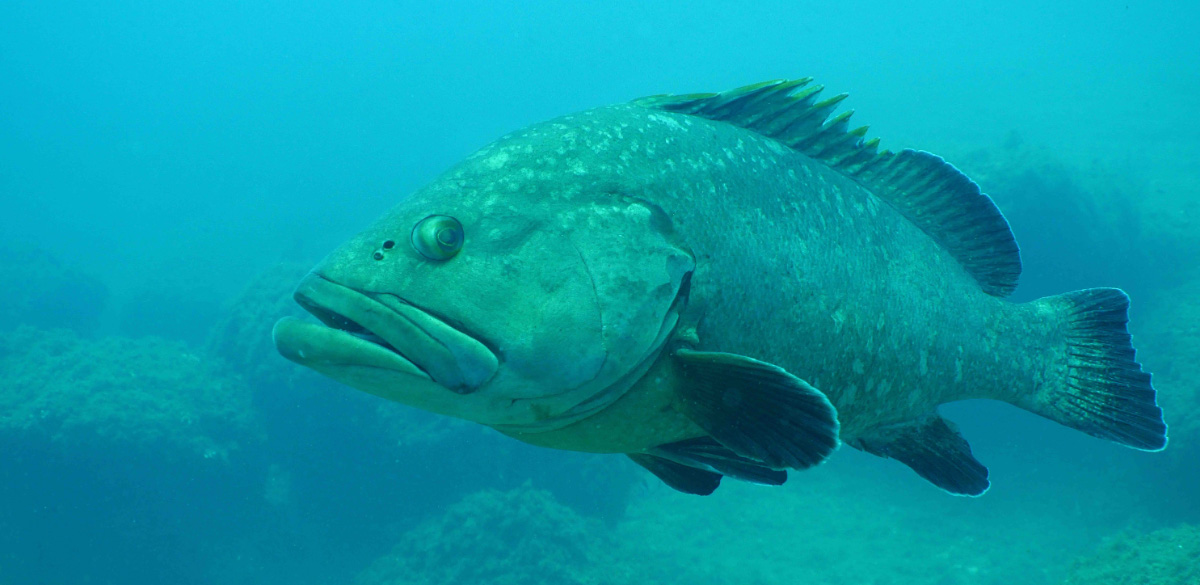Give the sea space to breathe, and you’d be surprised how wonderfully life can recover. Marine Protected Areas are a proven, efficient way to achieve successful marine regeneration – a crucial path for restoring biodiversity. And the proof is in the pudding: since the declaration of Sa Dragonera Island Marine Reserve (external waters) in 2020, the fish biomass has tripled in species of commercial interest.
The reserve was established by the Ministry of Agriculture, Fisheries and Food (MAPA). The data showing the increase in demersal species (fish that live near the bottom) was published in March by the General Directorate of Fisheries and Marine Environment of the Balearic Government.
The waters of the island of Sa Dragonera, which include the coastline of Sant Elm, are protected by several legal frameworks (terrestrial and marine) thanks, in large part, to the efforts and commitment of the local community and NGOs. The area has a great variety of habitats in good condition, such seagrass meadows, coves and rocky shores. These form an ideal habitat for the regeneration of a multitude of species: fish (groupers, scorpion fish, red drum, conger eels, forkbeards, gypsies, thrushes, bream and dentex), crustaceans and other invertebrates such as slipper lobsters and octopuses.
This successful protection and restoration of nature comes at a time where the loss of biodiversity has become a global environmental crisis. However, efficiently implementing marine reserve is not as simple as signing a piece of paper and sending out a press release. Lots of work, management and monitoring contributes to the successful protection of an area. Save the Med strongly supports the involvement of local communities in the decision making and care of their own territory is an essential step towards an efficient regeneration of the natural environment and a more balanced relationship with it.
That’s why Save the Med has been working on a process to reach participatory governance in the Municipality of Andratx, through a project known as Sa Dragonera Blava. This project aims to transform the way the Andratx coastline is managed and driven towards a more environmentally conscious, active and inclusive participation model. A community that takes pride in their unique natural and cultural heritage while also accompanying economical local sectors towards better environmental practices.
Over the years, Sa Dragonera Blava has organised dozens of initiatives, including best practice campaigns, participatory forums and educational activities at sea and on land. It has published videos about the marine environment and the local community as well as underwater photography exhibitions.
One of the pillars of the project is “Xarxa Dragonera Blava” (Blue Dragonera Network) a group that represents the community of Andratx (people connected to the area, professionally or recreationally) and that has a unique bond with Sa Dragonera and its waters. The Xarxa meets quarterly in open participative forums, discussing issues that are a priority to the community, and implementing plans of action to protect the municipality coastline and waters.
To find out more about this community minded approach, we interviewed Yaiza Santana from Save the Med, the project coordinator, who has been working with the Andratx community for three years.
What is participatory governance and why is it important?
Participatory governance is a governance system that includes the active participation of inhabitants, professionals and other stakeholders in the decision making processes of a specific area. It takes into account their perspectives and harnesses their local knowledge.
This process is essential for the effective management of natural areas and reserves. It is adapted to the reality of the specific place, and can only be achieved by including the voices of the people who live there. These are the people who are knowledgeable about the dynamics, problems and resources of a particular area. It is also essential to make these people, the stakeholders, feel that they are part of the decision-making process. That they have therefore been co-creators of the regulations. This avoids much discontent and non-compliance with any regulations that are created or applied. In the process of participatory governance, citizens are empowered, and this is vital for a more caring and closer relationship with the environment in the long term.
What are the main challenges the marine reserve still faces?
Although the area is protected, it still faces lots of stressors from human activity. The fish population, marine habitats and their biodiversity are still threatened. Some examples of stressors are the high speeds of boats in the Freu de Sa Dragonera which damage wildlife and also interfere with people’s access to Dragonera and its sea by more respectful means (kayaks, SUPs, etc.). Other factors are the quality of the water (pollution from sewage and other waste) and anchorages on fragile habitats like the Posidonia meadows.
What have you learnt during this process of community involvement?
I have learned to listen, and not to have a preconceived notion of what people want and what needs to be done. I have also learned that things take time and sometimes taking things a step at a time is the way to be able to deal with more complex problems.
Are there any examples of successful actions you would like to share?
For me, the most successful thing is to have people involved in the participatory process and that more and more people are joining in. We must also include the management personnel of the natural reserve as an important part of this process.



























0 Comments